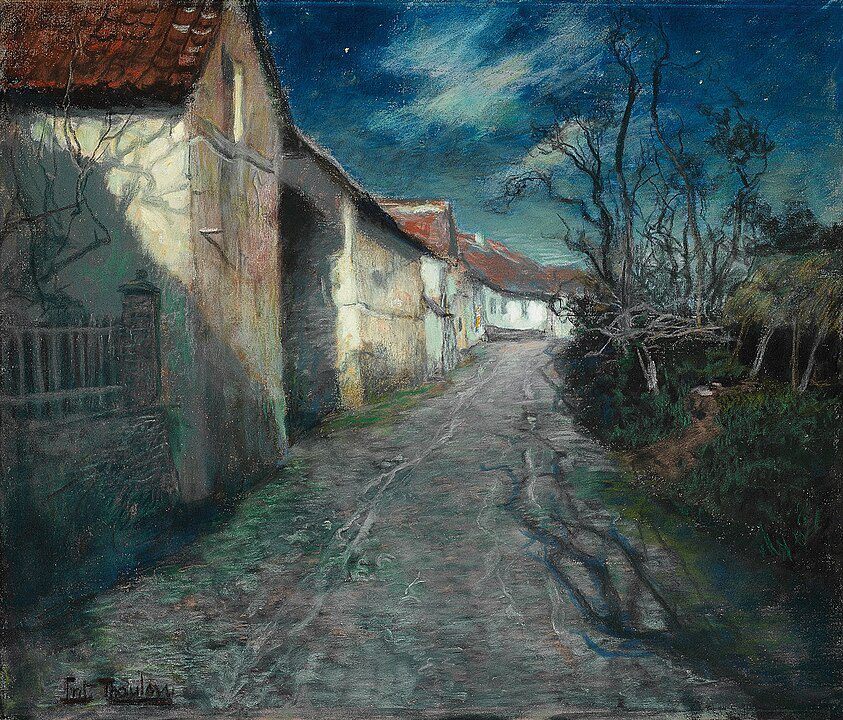
Frits Thaulow (1847-1906) was a Norwegian painter, celebrated for his naturalistic and impressionistic landscapes that capture the essence and beauty of water. Born on October 20, 1847, in Christiania (now Oslo), Norway, Thaulow was destined to become one of the most prominent and beloved landscape painters of his era, known for his unique ability to depict the play of light on water with remarkable realism and vitality.
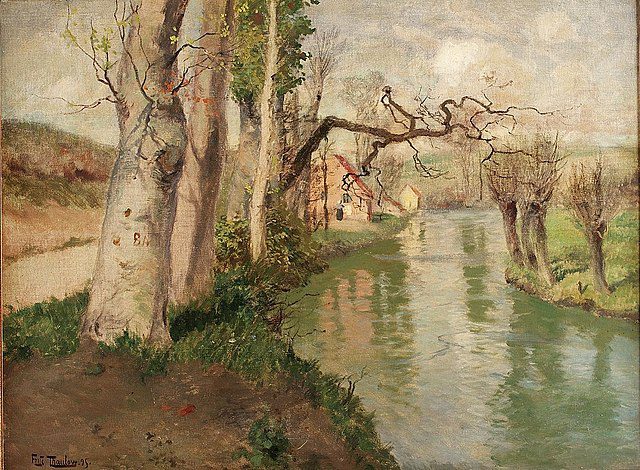
From a young age, Thaulow showed an interest in art, a passion that would lead him to study at the Academy of Art in Copenhagen in the early 1870s. However, it was his time in Paris that would have a profound impact on his artistic development. Thaulow was deeply influenced by the French impressionists, who were revolutionizing the art world with their innovative use of color and light. While in France, Thaulow absorbed these new ideas, which would significantly shape his own approach to painting.
Norwegian landscapes
Thaulow’s early work primarily focused on the Norwegian landscape, featuring scenes of rural life and nature that were rendered with a remarkable attention to detail and a profound sense of atmosphere. His paintings from this period are characterized by their realistic portrayal of his subjects, often highlighted by the delicate interplay of light and shadow.
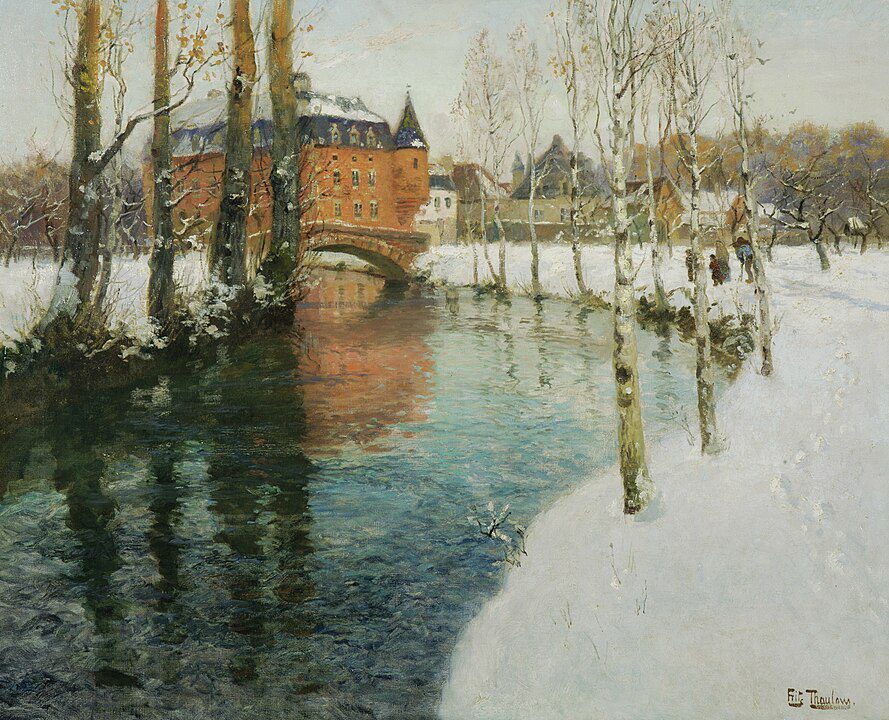
In the mid-1880s, Thaulow’s style began to evolve as he incorporated impressionistic techniques into his work. He became fascinated with the effects of light on water, a theme that would dominate his paintings for the rest of his career. Thaulow’s water scenes, from tranquil ponds to flowing rivers, are celebrated for their dynamic representation of moving water and the reflections of light. His technique involved loose, fluid brushstrokes that captured the essence of his subject matter with both accuracy and a sense of immediacy.
Thaulow’s talent was recognized not only in Norway but also internationally. He lived and worked in various parts of Europe, including France, where he became a central figure among the Scandinavian artists in Paris. Thaulow’s work was exhibited widely, earning him accolades and recognition from both critics and the public. His ability to merge the detailed naturalism of his early training with the luminous color and light of Impressionism allowed him to create a unique and enduring style.
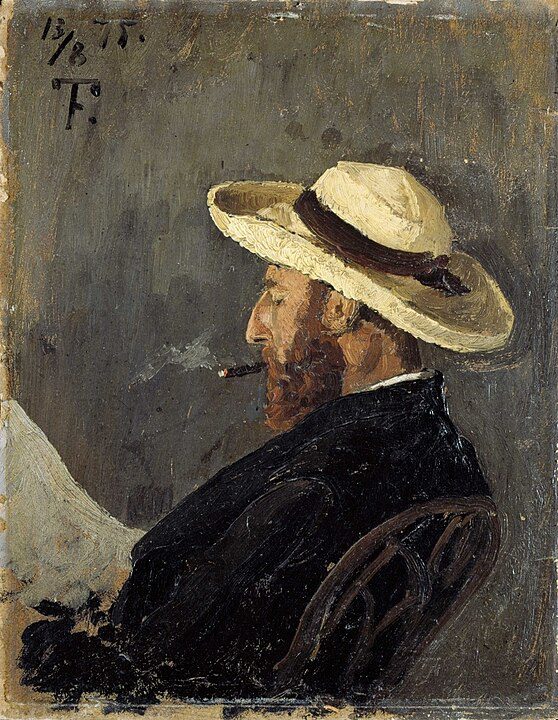
Aside from his artistic contributions, Thaulow was also instrumental in promoting the arts in Norway and abroad. He was a mentor to younger artists and played a significant role in art organizations and exhibitions. His dedication to the art community helped foster a vibrant cultural environment that supported the development of emerging talents.
Nature and Quaintness
Thaulow’s later years were marked by continued success and artistic productivity. He returned to Norway in the early 20th century, where he continued to paint the landscapes that he loved. The Norwegian countryside, with its rivers, waterfalls, and quaint villages, provided endless inspiration for Thaulow, who captured its beauty with his characteristic mastery of light and water.
Frits Thaulow passed away on November 5, 1906, in Volendam, Netherlands. His legacy lives on through his contributions to the Impressionist movement and his influence on the generations of artists that followed. Thaulow’s paintings are held in major museums and collections around the world, serving as a testament to his skill and vision. His work remains a beloved part of Norwegian cultural heritage, celebrated for its ability to capture the fleeting moments of beauty in the natural world.
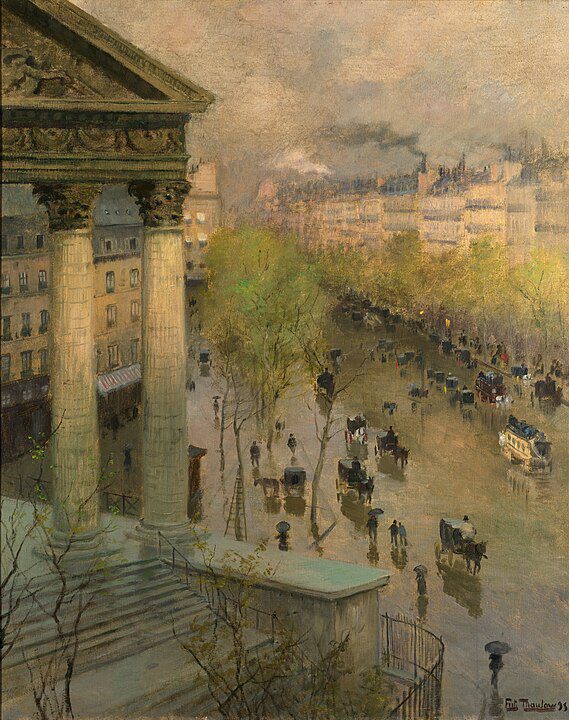
In conclusion, Frits Thaulow’s biography is a story of artistic evolution and dedication. From the realistic landscapes of his early years to the impressionistic water scenes that defined his career, Thaulow remained committed to exploring the nuances of light and nature. His work not only enriched the Norwegian art scene but also contributed to the broader currents of European Impressionism. Thaulow’s legacy as a painter of water, with its ever-changing and dynamic beauty, continues to inspire and captivate audiences around the world.




